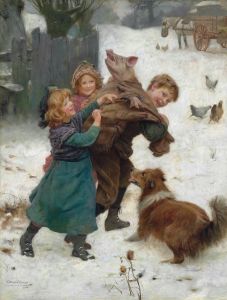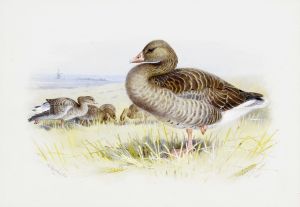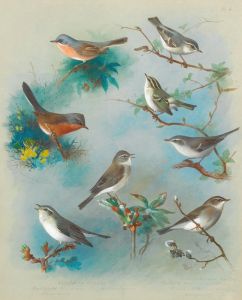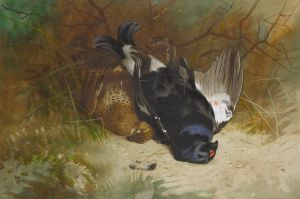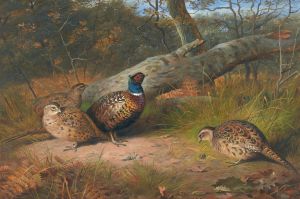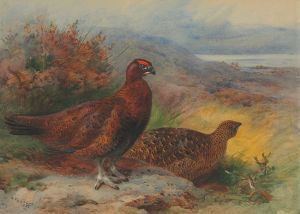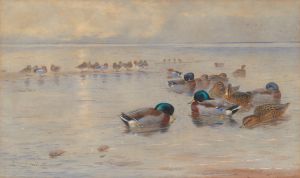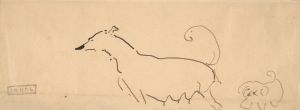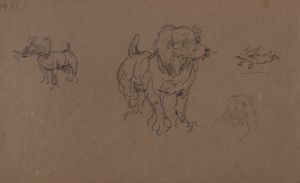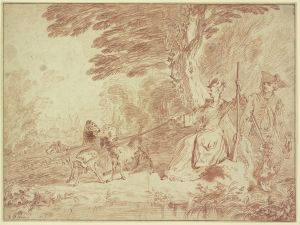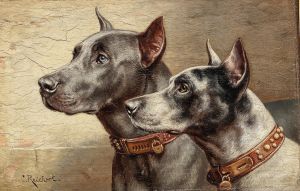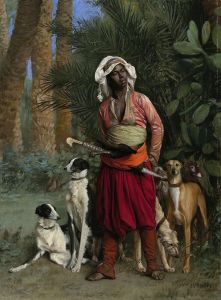
Hounds; Fleur and Frogmore
A hand-painted replica of Archibald Thorburn’s masterpiece Hounds; Fleur and Frogmore, meticulously crafted by professional artists to capture the true essence of the original. Each piece is created with museum-quality canvas and rare mineral pigments, carefully painted by experienced artists with delicate brushstrokes and rich, layered colors to perfectly recreate the texture of the original artwork. Unlike machine-printed reproductions, this hand-painted version brings the painting to life, infused with the artist’s emotions and skill in every stroke. Whether for personal collection or home decoration, it instantly elevates the artistic atmosphere of any space.
Archibald Thorburn (1860–1935) was a Scottish artist renowned for his exceptional wildlife paintings, particularly of birds and mammals. His work is celebrated for its meticulous attention to detail and lifelike representation of animals in their natural habitats. One of his notable works is "Hounds; Fleur and Frogmore," which exemplifies his skill in capturing the essence and vitality of animals.
"Hounds; Fleur and Frogmore" is a painting that features two hounds, presumably named Fleur and Frogmore, depicted with Thorburn's characteristic precision and sensitivity to the subject matter. Thorburn's ability to render the texture of fur and the anatomy of animals with such accuracy is a testament to his keen observational skills and deep understanding of wildlife. His paintings often reflect a harmonious blend of artistic talent and scientific accuracy, making them valuable both as art and as studies of natural history.
Thorburn was born in Lasswade, near Edinburgh, and was the fifth son of Robert Thorburn, a miniaturist to Queen Victoria. He was educated at the St John's Wood School of Art in London, where he honed his skills in drawing and painting. Thorburn's career took off in the late 19th and early 20th centuries, a period when there was a growing interest in wildlife and natural history, partly due to the expansion of the British Empire and the consequent exposure to diverse flora and fauna.
Throughout his career, Thorburn contributed illustrations to numerous ornithological books, including Lord Lilford's "Coloured Figures of the Birds of the British Islands" and W. H. Hudson's "British Birds." His work was highly regarded for its accuracy and artistic quality, earning him a reputation as one of the leading wildlife artists of his time.
Thorburn's paintings are characterized by their use of natural light and soft, muted colors, which lend a serene and realistic quality to his depictions of animals. He often painted en plein air, observing his subjects in their natural environments to capture their behavior and interactions authentically. This approach is evident in "Hounds; Fleur and Frogmore," where the hounds are portrayed with a sense of movement and vitality, as if caught in a moment of action.
In addition to his artistic achievements, Thorburn was also an advocate for wildlife conservation. He was a member of the Society for the Protection of Birds, which later became the Royal Society for the Protection of Birds (RSPB), and he used his art to raise awareness about the importance of preserving natural habitats and the species that inhabit them.
Thorburn's legacy continues to influence wildlife artists today, and his paintings remain highly sought after by collectors and art enthusiasts. "Hounds; Fleur and Frogmore," like many of his works, is a testament to his dedication to capturing the beauty and diversity of the natural world through art.





